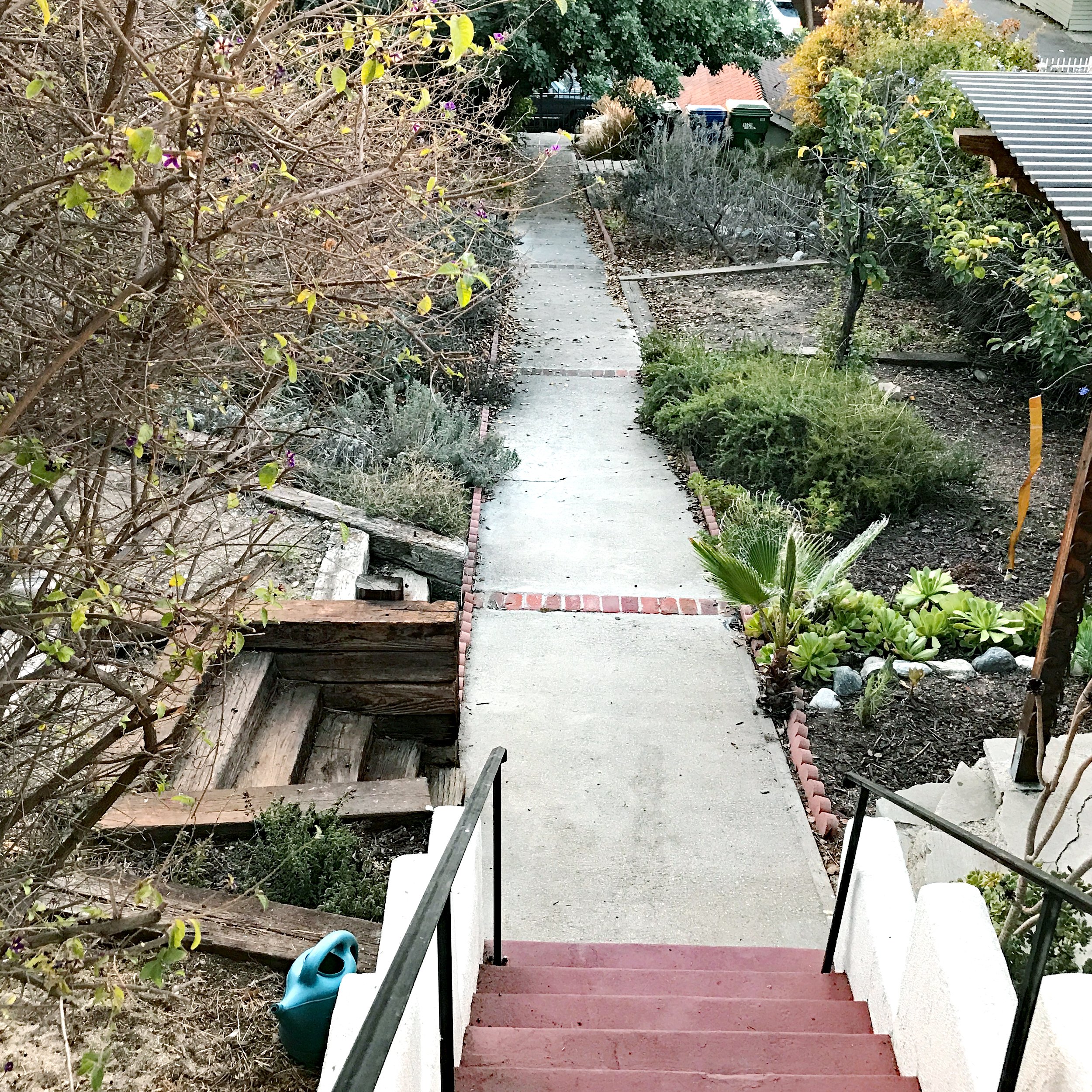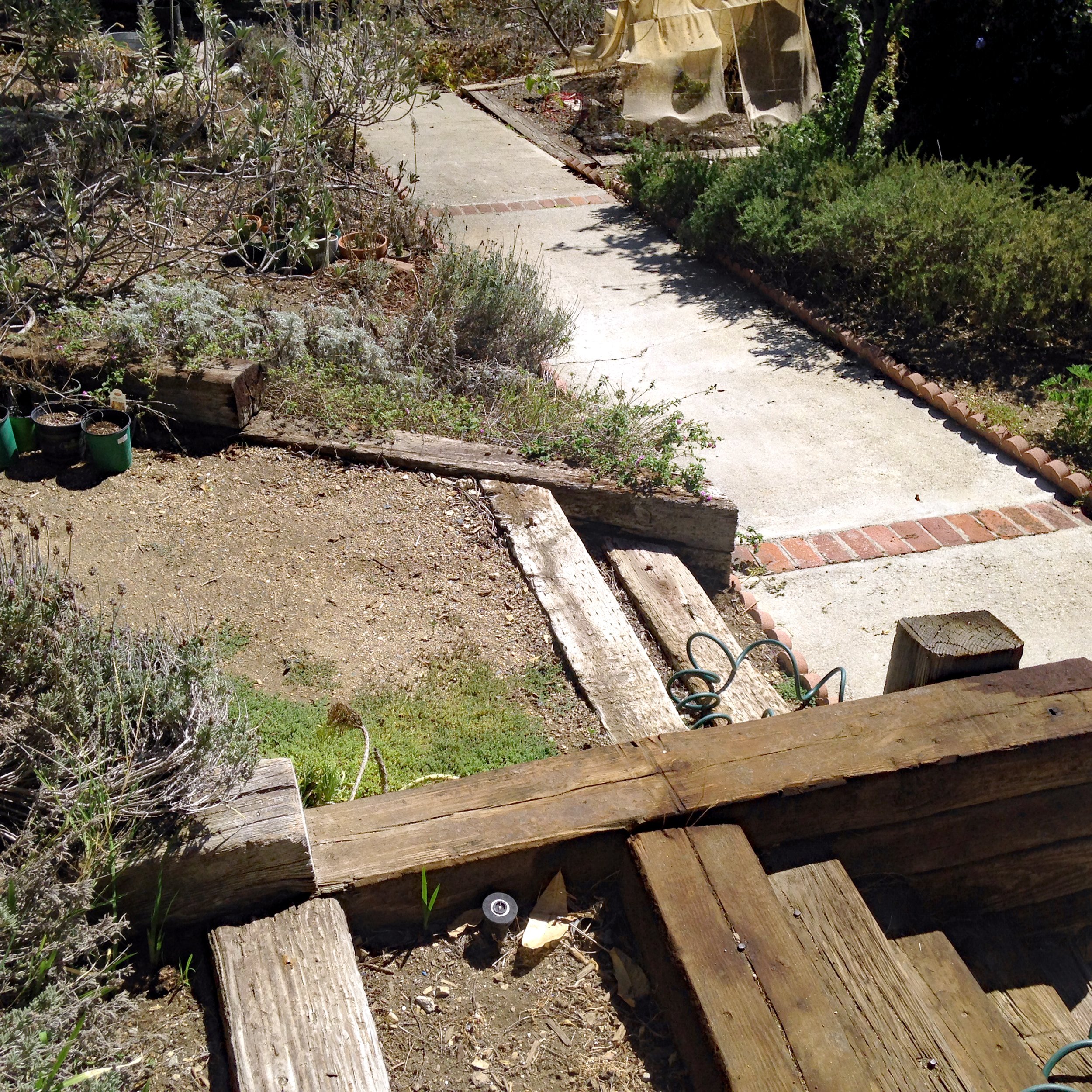canvas 5025
2011 - 2016
Helga moved to this LAND in 2011—land that was once stewarded by the ancestors of today’s Chumash and Tongva (over 30,000 years ago) and covered with Quercus agrifolia (coastal live oak) and Juglans californica (california black walnut) trees. Its hard to imagine what the land looked liked then as the written settler-colonial history begins in the 1800s and the story depicts land as subdivided property, treated as commodity, trading hands from one land claim to another - the VErdugos who grazed it for cattle industry in the early 1800s to the drought that apparently decimated the cattle industry to the hands of Glassell and Chapman who leased it to sheepherders in 1869 until it was sold again to Judson and Morgan (j.w. morgan), who subdivided the land as farm parcels between 1882 and 1886, referring to it as the Highland park tract. It wasn’t until plans of new railroad construction connecting Pasadena to Los angeles was announced, that farm parcels were soon transformed into resident properties and population began to grow rapidly. At some point a highland park landowner D.W. ELDRED for which Eldred street (the steepest street in Los Angeles) and the land canvas 5025 occupies is named after, referred to as “TRACT #11”. According to the LA county assessor, the house was built in 1908, but so far no original plans or photos of the land from that time or even before have been found.

Within this concrete grid system, mainly non-native plants resided

This pathway was removed in 2021 and the concrete urbanite was used in terracing, replacing the railroad ties

By removing the railroad ties, we also removed the grid system which was not suited for an energy flow that supports plant life

a lot of ties and bare compact soil

All the railroad ties and most of the plants in this photo were removed

Railroad ties used for a 4' wall, seeping damaging chemicals into the soil for 30 or so years

Ceanothus (California lilac) barely visible in this photo. She was one of only two native plants that were on this land when we arrived here (2011). We removed too many invasive Foxtails (including the ones in this photo)

Base Map - this was what the converted landscape looked like in 2016 before the railroad ties were removed
after a few years in the east coast, Helga returned to this same land in 2016. It wasn’t until then that she realized that the railroad ties that terraced the front and back areas were chemically treated with a carcinogenic form of creosote that had been leaking into the soil for the past 30 years. In 1993, railroad tracks that had once moved trains from Highland Park to Redondo Beach had been pulled out as the Santa Fe rail line was acquired by the Metropolitan Transit Authority as a link on the Pasadena Gold Line. Many of the dismantled ties were collected by Highland Park residents and used in landscaping. the California EPA banned the use of the ties in 2009, but not only do many residents not know about their damaging impact, but the epa provides no safe means of removing or transporting the ties. From 2016 - 2019, Helga carried out the tedious process of removing the 90+ railroad ties from the soil and created ecosystem designs inclusive of California native plants local to the area, non-invasive drought tolerant relatives, water harvesting bioswales, and land-care based on ITK (indigenous traditional knowledge) in an attempt to restore the overall health of the soil and provide for pollinators and native habitat communities either passing through or establishing homes. Canvas 5025 then became the first untune ecocultural project and studio site for further experimentation, education, and attempt in restoration of the colonial converted landscape. canvas 5025 presents a messy highland park challenge, pressed deeply within ongoing construction OF NEW CONDOMINIUMS, unhealthy LEAF BLOWERs orchestrated like weekly block parties, intentionally modified cars and motorcycles rattling windows and foundations, and daily polluting fireworks running panic through my dog’s heart, reminding earth-caring stewards that the hardest restoration lies in changing colonial mindsets.

land in front of the house is on a south east facing slope. land behind the house also faces south east and receives the sun as it sets in west.

Bare soil in need of the healing of native plants after the railroad ties were removed

Eleanor and Lila of Plant Friends removed one of the the concrete pathway to allow for new meandering pathways and breathable soil that received fresh mulch and native nitrogen rich clovers

Back area Railroad ties that formed the wall were removed - fresh start!

Plant Friends utilized the broken urbanite from the removed concrete pathway to create a two level garden terrace.

New garden beds utilizing river rocks and wooden stumps found on the land were created with the help of Plant Friends (Lila pictured here)

Plant Friends also helped to break up a concrete deck area (which is now a greenhouse studio) and the broken urbanite was reused to create this layered step and terracing system (again replacing the railroad ties) and allowing for permeable crevices between the stones - what soon became the most desired spots for the California poppies and common yarrow

imperfect steps with love and character

